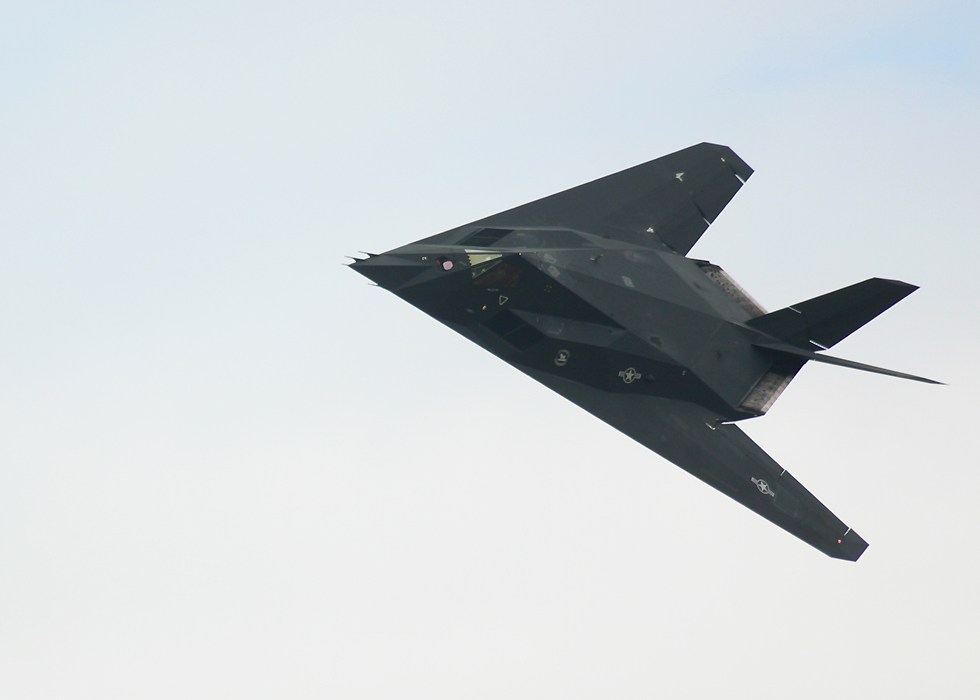|
Radar and
How to Evade It
The F-22 uses stealth technology to reduce
it's radar and infrared signature. In this way it is harder to detect
when flying in hostile territory. Also, the F-22 is capable of shooting
down an enemy plane without ever being detected. This gives the F-22
unmatched air superiority in today's skies.
Radar Basics
Radar, short for "Radio Detection and
Ranging", uses a man-made pulse of radio energy to "see" objects based
on length and time it takes the pulse to return to the source. Radar
sends long wavelength radiation (called microwaves) from an antenna and
detects the energy after it bounces off remote targets. Many common
materials affect the polarity and strength of the microwave
differently, and this can help with their identification.
A basic formula for
calculating target distance using radar is: Target Range =
T/12.36 microseconds per nautical Mile
where T = elapsed
time.

http://www.crh.noaa.gov/iwx/program_areas/outreach/wsr88d/88dinfo.php
A
basic picture of how radar works. After the radio
signal is sent out it bounces off any object in the way and a signal is
sent back to the radar transmitter, thus creating a map of the
surrounding area.
F-22 Stealth Technology
The F-22 is not completely invisible to radar, but it's
radar cross section (R.C.S.) is reduced to the size of a bird's R.C.S.
(approximately .01 square meter), so the F-22 is impossible to
correctly identify as a plane. In order to achieve this, the F-22 is
made from many special alloys that have little or no radar echo and the
whole fuselage is covered in radar absorbing material, which are made
to absorb radio signals instead of reflect them. Also, it uses a
body shape that deflects radar signals in a direction other than that
of the radar transmitter. This is done by designing the whole plane
with flat surfaces, because any round shapes on the plane would have a
chance of facing the radar transmitter when a microwave bounces off of
it. Another plane that uses this this technology to reduce radar
detection is the F-117.

 http://www.richard-seaman.com/Aircraft/AirShows/Riat2002/F117/index.html
http://www.airforce-technology.com/projects/f22/f222.html
http://www.richard-seaman.com/Aircraft/AirShows/Riat2002/F117/index.html
http://www.airforce-technology.com/projects/f22/f222.html
The
F-117 (left) and the F-22. Both planes were designed to have minimal
radar cross sections with the use of mostly flat surfaces on the plane
and radar absorbent material.
|

http://www.richard-seaman.com/Aircraft/AirShows/Riat2002/F117/index.html http://www.airforce-technology.com/projects/f22/f222.html
